In 1952, Alexandra Luke organized an exhibition of abstract Canadian art that opened in Oshawa at Adelaide House in October. The collection had the distinction of being the first exhibition of abstract painting to be assembled in Canada, by Canadian artists, on a national scale and devoted exclusively to this art form.
Soon after, Simpson’s Department store in Toronto sponsored an exhibition of abstract and non-objective paintings under the title Abstracts at Home. Seven artists participated in this: Jack Bush, Oscar Cahén, Tom Hodgson, Alexandra Luke, Ray Mead, Kazuo Nakamura, and William Ronald.
As a result of the Abstracts at Home exhibition, the seven artists came together and discussed the possibility of showing their work as a group. They held their first meeting at Alexandra Luke’s lakeside studio in Oshawa, and also invited Jock Macdonald, Harold Town, Walter Yarwood, and Hortense Gordon. It was there that the eleven artists decided to call themselves ‘Painters Eleven’. They held their first exhibition under that name in February of 1954 at the Roberts Gallery in Toronto.The RMG proudly holds Canada’s largest collection of works by Painters Eleven, primarily as a result of significant donations to the permanent collection by Alexandra Luke.
View Full Collection
ABOUT THE ARTISTS
Jack Bush

Born in Toronto, Jack Bush studied art in Montreal at the Royal Canadian Academy (1926-28) under Adam Sheriff Scott and Edmond Dynnet. Inspired by Group of Seven protégé Charles Comfort, one of his Ontario College of Art instructors in the 1930s, Bush painted landscapes in the Group style.
Bush’s first visit to the Museum of Modern Art in New York occurred in 1950 and this visit helped to re-direct his efforts to large-scale expressionist paintings. New York art critic Clement Greenberg became a mentor to Bush and encouraged him to refine his palette, and approach. Bush would abandon his Abstract Expressionist style by simplifying compositions using an all-over coverage of thinly applied bright colors. He represented Canada at the 1967 São Paulo Art Biennial, retiring from a career as a commercial artist in 1968 to devote his efforts fully to painting. He became Officer of the Order of Canada in 1976.
Oscar Cahén
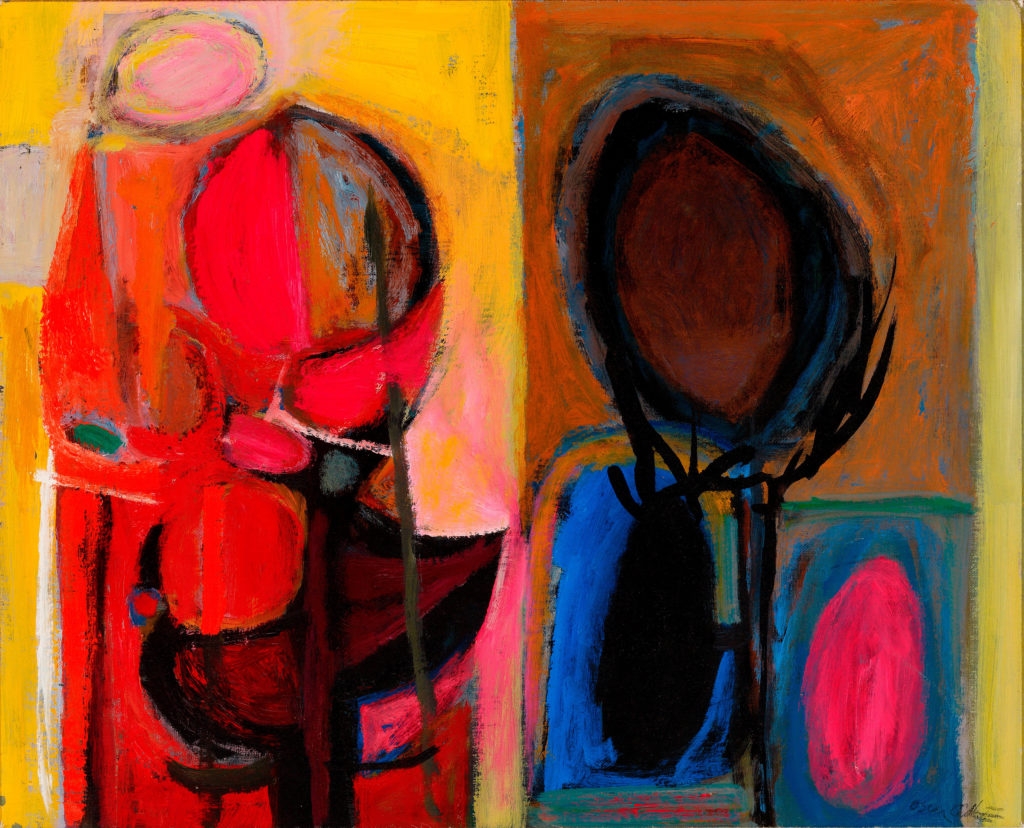
Born in Copenhagen, Denmark, Oscar Cahén died in a car accident in Oakville, Ontario in 1956. He studied drawing, painting, design and illustration in Germany, Italy, France, Sweden and Czechoslovakia. After obtaining a Masters Degree in Fine Art from the Kunstakadakemie in Dresden, he was appointed professor of design, illustration and painting at the Rotter School in Prague. Cahén came to Canada in 1940 as a war internee, the son of a German diplomat turned anti-Nazi. Released in 1942, he moved to Toronto in 1944 where he met Walter Yarwood and Harold Town, aligning himself with the avant-garde art in that city while becoming one of Canada’s leading magazine illustrators. Cahén’s dark, expressionist paintings of the late 1940s, gave way in the early 1950s to brilliantly colored abstractions. The younger generation of Painters Eleven were particularly influenced by his work.
Hortense Gordon

Hortense (Mattice) Gordon, who was born in Hamilton, studied under John Sloan Gordon at the Hamilton Art School, marrying Gordon in 1920. She taught at Hamilton Technical School from 1916-1951, heading the institute from 1934.
Gordon began experimenting with abstract painting in the 1930’s and was initially drawn to Piet Mondrian’s ideas of pure design and color. She was the first Canadian to study with Hans Hofmann in 1946 and was a proponent of his “push and pull” theory evident particularly in her geometric abstractions. Brought into Painters Eleven by Ray Mead, she was a mentor to the younger generation of the group.
Tom Hodgson
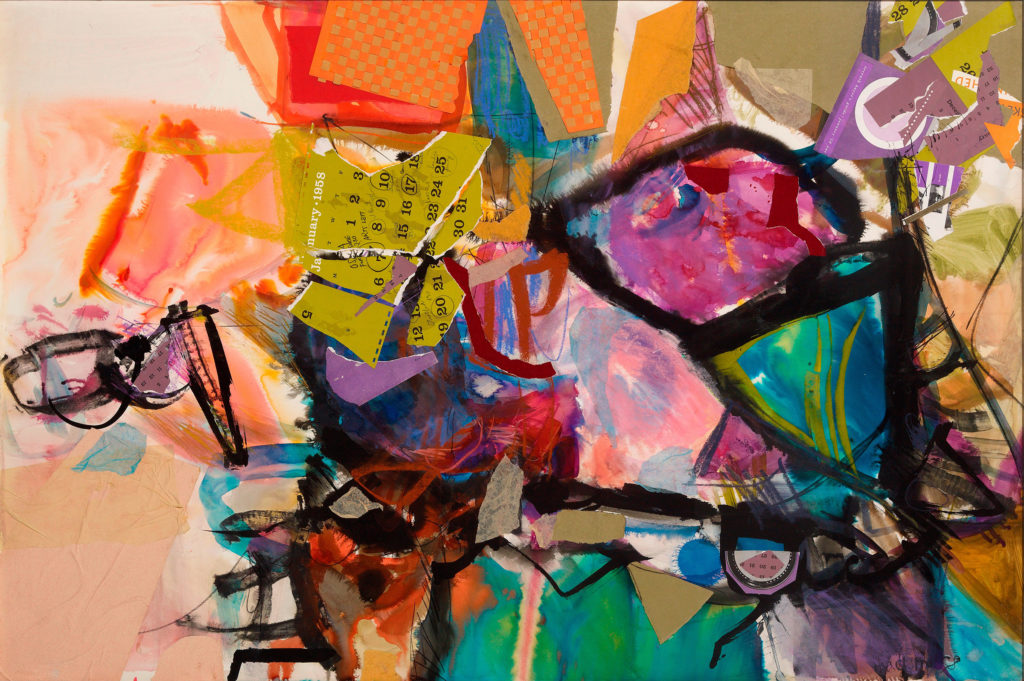
Tom Hodgson was raised on Toronto’s Centre Island where he learned to paddle as a child. He would go on to represent Canada at the Helsinki (1952) and Melbourne Olympics (1956). A gifted artist from an early age, Hodgson studied with Arthur Lismer at the Art Gallery of Toronto (now Art Gallery of Ontario), Central Technical School and the Ontario College of Art. He was surprised by the large size of canvases used by abstract painters at the 1955 Pittsburgh International Exhibition where his work was chosen for exhibition. He would soon follow suite with his own large-scale spontaneous gestural works.
Alexandra Luke

Alexandra Luke, born Margaret Alexandra Luke in Montreal, moved to Oshawa in 1914. Always interested in the arts, she enrolled in the Banff School of Fine Arts and met J.W.G. (Jock) Macdonald in 1945. Luke was highly influenced by Macdonald, and also by American abstract artist Hans Hofmann, under whom she studied for three summers between 1947 and 1950. Along with Surrealism, Macdonald introduced Luke to Theosophy; a spiritual dimension that was of significance to much of her work. Luke was instrumental in organizing the first Canadian all-abstract Canada wide travelling exhibition, Canadian Abstract Exhibition, in 1952, which included future Painters Eleven members. The following year, Luke’s work was included in the Abstracts at Home display at Simpson’s department store. Painters Eleven’s first meeting was held at Luke’s cottage in Oshawa/Whitby in November 1953.
Jock MacDonald
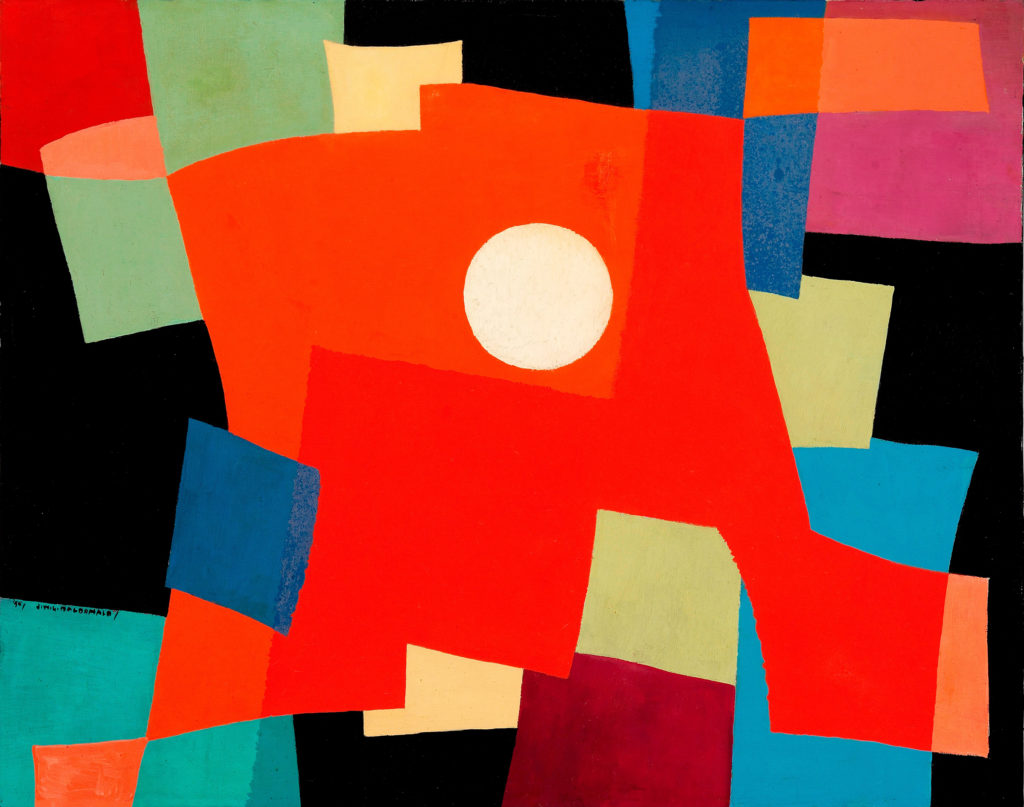
Born in Thurso, Scotland J.W.G. (Jock) Macdonald, graduated from the Edinburgh College of Art in 1922. He moved to Vancouver in 1926 to teach at the Vancouver School of Decorative and Applied Arts. While his early work shows the influence of the Group of Seven tradition, he was introduced, in Vancouver, to Surrealism through Grace Pailthorpe a Freudian analyst. This meeting led to his automatic work and eventually larger-scaled abstractions. He started teaching at the Ontario College of Art in 1947 and was a particular influence on fellow Painters Eleven members William Ronald and Alexandra Luke.
Ray Mead

Ray Mead was born in England and was stationed in Hamilton as a member of the R.A.F. from 1943-44. He immigrated to Hamilton in 1946 where he met Hortense Gordon. Mead, who had studied in London at the Slade School of Art where he was exposed to the work of Ben Nicholson and Paul Nash, was particularly influenced by Gordon as he acknowledged: “she educated me more than any art school.” Mead had a successful career as a commercial artist for the MacLaren Advertising Company, in both Toronto and Montreal, returning to Toronto in 1987 to paint full time. While attracted to the works of American abstract expressionists such as Franz Kline, Mead was deeply influenced by European abstractionists such as Nicolas de Staël. His personal style is characterized by the use of rich fields of colour.
Kazuo Nakamura
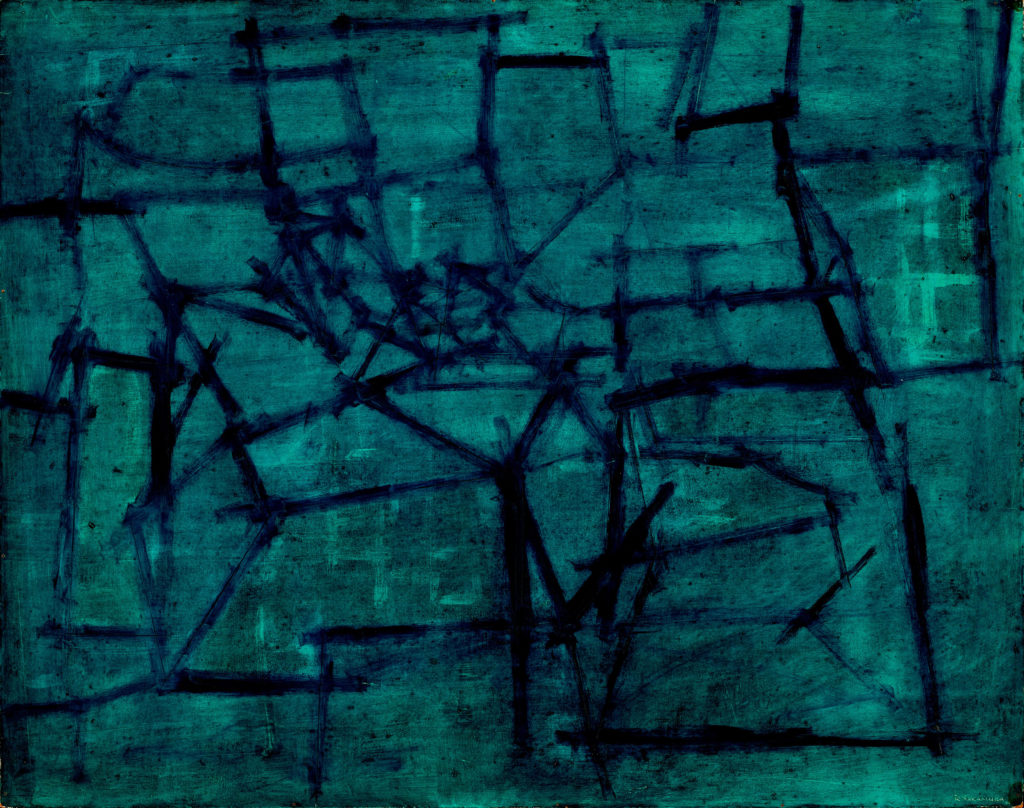
Born in Vancouver, Kazuo Nakamura, of Japanese heritage, was interned with his family during WWII in Hope, British Columbia. After the war, he moved to Hamilton where he took evening classes with Hortense Gordon before enrolling at the Central Technical School in Toronto.
Unlike the expressionist nature of the work of many of his Painters Eleven colleagues, Nakamura’s abstract painting is distinguished by his use of simpler structures and monochromatic colors. He held a particular fascination with science and mathematics evident in his use of patterns, linear perspectives, and processes. Nakamura has said “In a sense, scientists and artists are doing the same thing. This world of pattern is a world we are discovering together.”
William Ronald
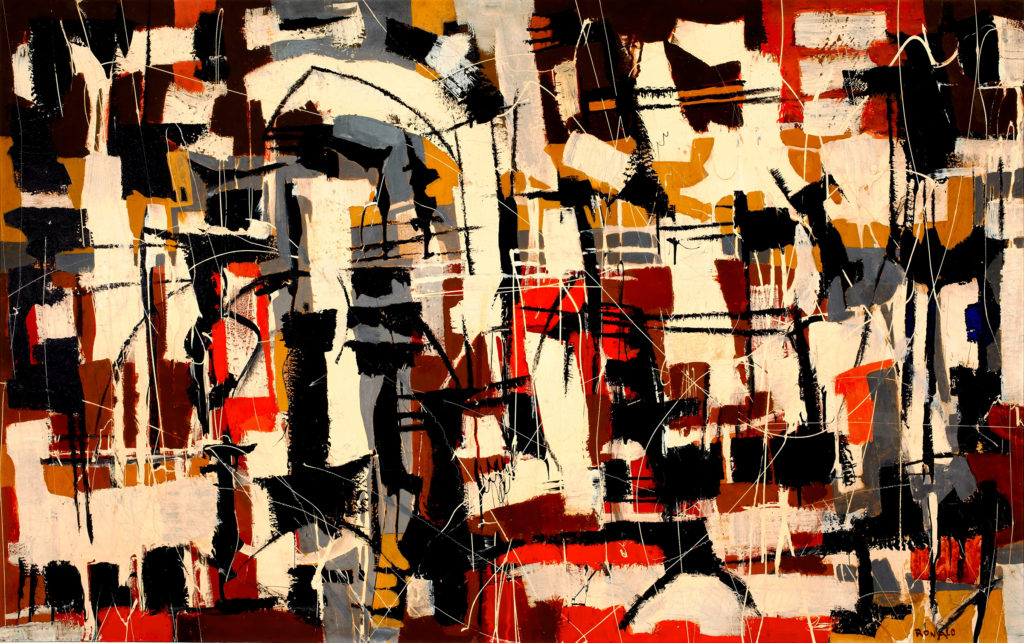
One of Canada’s most significant international artists of the 1950s, William Ronald Smith was born in Stratford. He was a graduate of the Ontario College of Art and studied with Hans Hofmann in New York in 1952. Inspired by the abstract expressionist movement in that city, he returned to Toronto working at Simpson’s Company as a display artist. He, along with fellow Simpson’s employee Carry Cardell, organized the Abstracts at Home display in the Toronto store that would initiate Painters Eleven.
Ronald moved to New York in 1955 securing a spot in the stable of the prestigious Kootz Gallery and was known, after early overall lyrical abstract paintings, for his central image paintings—expressionist paintings that had an immediate impact on the viewer. He returned to Canada in the mid-1960s working in radio and television broadcasting while continuing to paint.
Harold Town
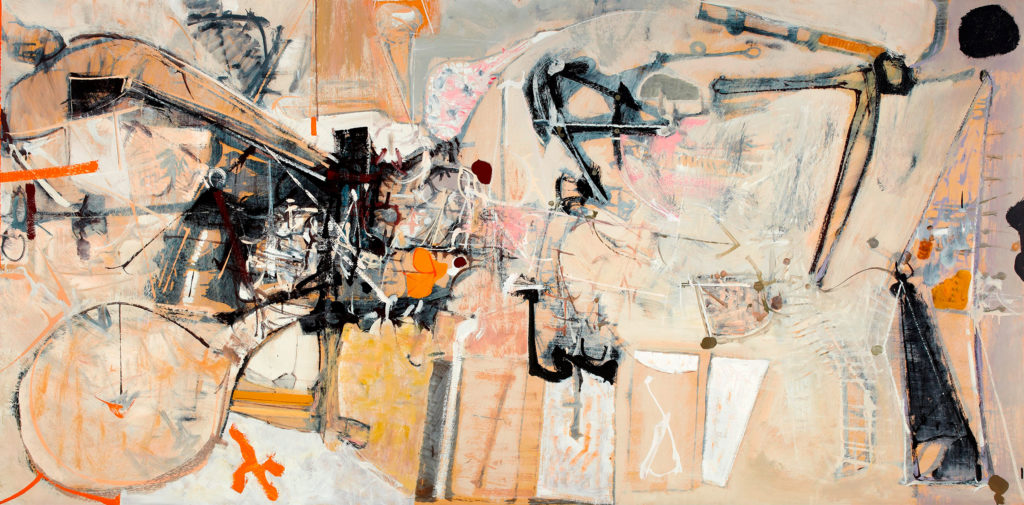
Harold Town was born in Toronto having studied at Western Technical School and the Ontario College of Art. His early work showed the influences of Graham Sutherland and Rico Lebrun with distinctly spiky forms. A seminal figure in 2oth century art, Town was flamboyant and immensely productive, working in a variety of mediums including collage, printmaking, drawing, painting and sculpture. He was interested in using everyday items in his work and, as he wrote: “absorb experience common to all and subsume it in uncommon expression.”
Town, also a published author, represented Canada in two Venice Biennales and was awarded the Order of Canada and an Honorary Doctorate from York University.
Walter Yarwood

Walter Yarwood was born in Toronto and studied commercial art at Western Technical School. One of the most enigmatic of the eleven, he considered himself largely self taught. In the 1940’s and 1950’s, he worked as a freelance advertising artist where he came into contact with Oscar Cahén (with whom he briefly shared a studio) and Harold Town. Yarwood’s lyrical and semi abstract paintings are known for their rich and commanding sense of colour. Shortly after 1960, Yarwood gave up painting in favour of sculpture receiving numerous commissions including at the University of Toronto, Winnipeg International Airport and York University. An instructor at Humber College in the 1970s, he resumed painting in 1980.